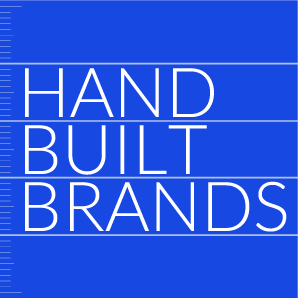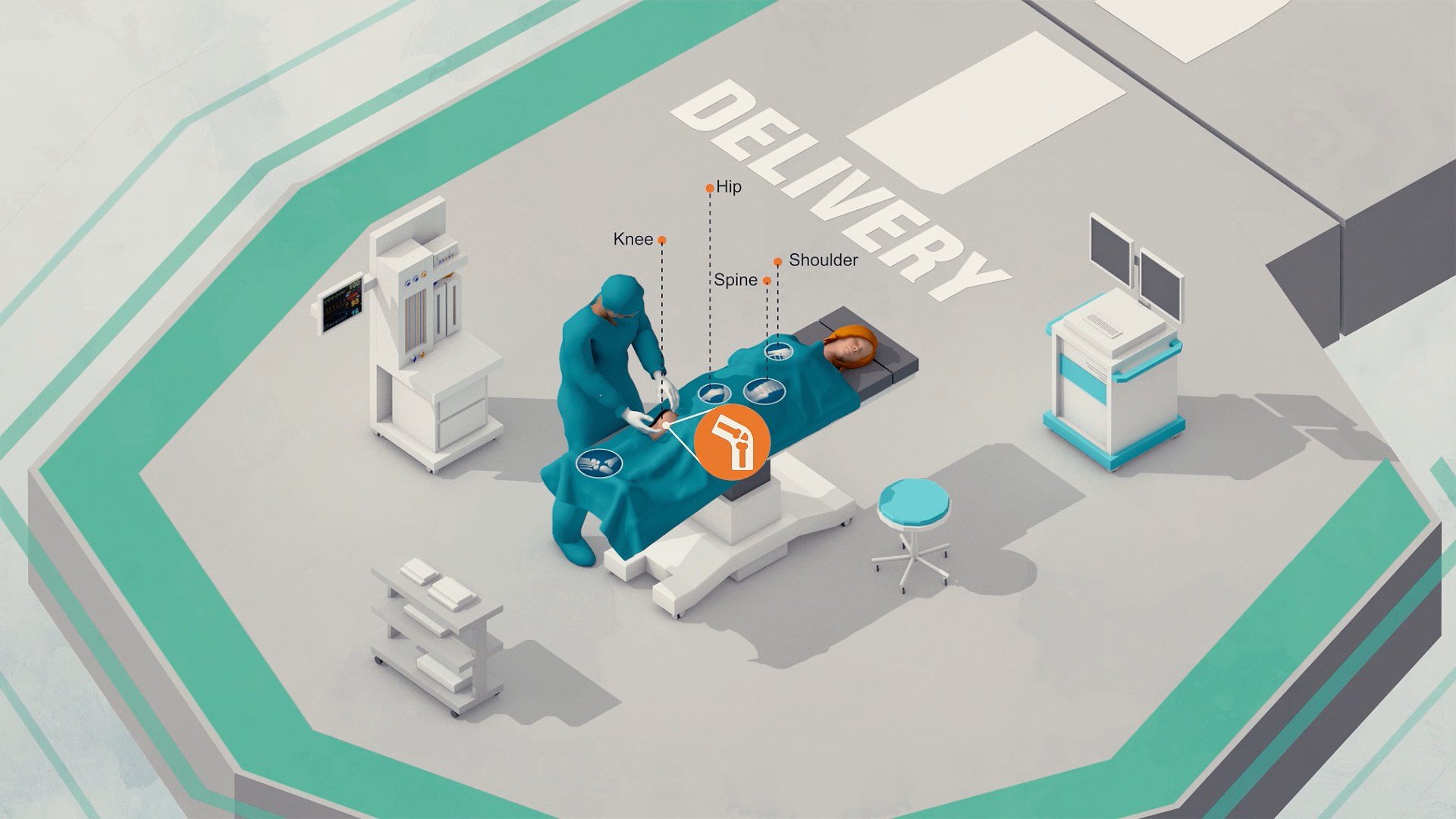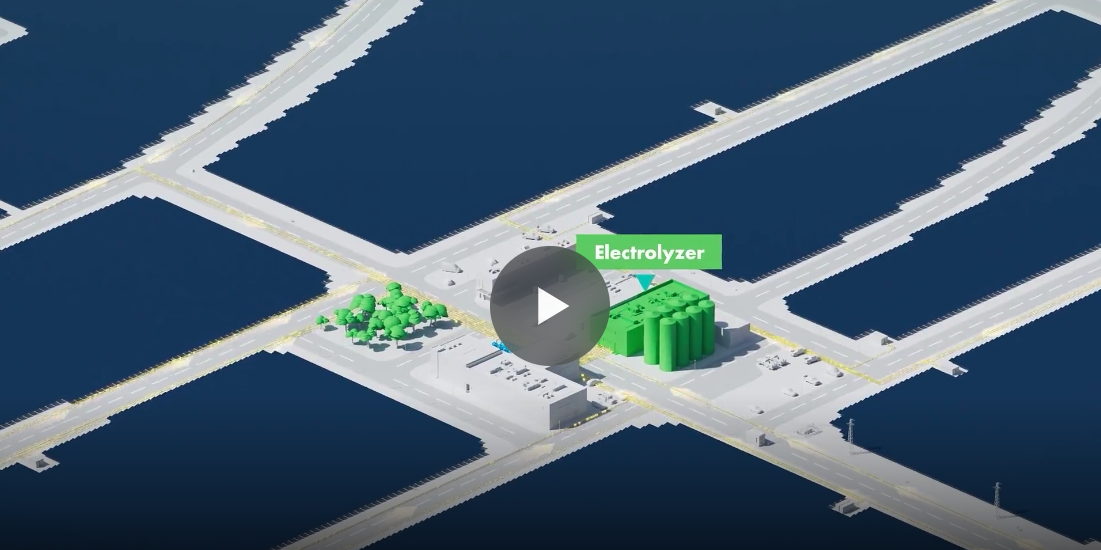We all have a Story - HandBuiltBrands
Pre-Production
Concept & Scripting
We kicked off this project with a clear narrative objective: bring to life how HandBuiltBrands uncovers and builds stories for our clients. From the beginning, we leaned into an abstract, architectural metaphor. The protagonist? A glowing, sentient sphere of light navigating a world in transformation. This orb became the visual stand-in for the story itself—starting as an idea, evolving through stages, and ending in meaningful impact. Designed as a pulsing, animated light source, the orb anchored the entire concept with a tactile presence.
The scripting process dove deep into conceptual territory. We explored everything from literal metaphors—books, classrooms —to more abstract symbolism. We focused on a conceptual approach over a literal one, pulling inspiration from Monument Valley with its spatial abstraction, impossible architecture, and meditative layout.
Visual references and early drafts centered on the story as a force of transformation—something that could reshape cities, unlock paths, and build from the inside out. Storytelling’s educational, generational power came up often in internal commentary. From this, the script defined three primary scenes: the story’s emergence, the transformation workshop, and the navigation of complexity that ultimately drives clarity.
The final script structure used a non-linear format: the light sets out, transforms the world, and returns changed—surrounded by the results of its journey.
Storyboarding & Rapid Prototyping
Prototyping started with timing out the voiceover, mapping narrative beats, and sketching scene layouts. The first renders were minimal—basic shapes and test movement—built purely to test pacing, sequencing, and camera flow. This included early animation of the orb, rough environment layouts, and temporary audio elements to hit emotional and dramatic cues.
We tested several visual directions that didn’t make the final cut. One early version involved a destruction simulation using Cinema 4D’s Voronoi fracture to break down “old world empires,” but feedback leaned toward constructive metaphors instead. Another cut involved referencing Vatican City for the citadel scene—ultimately swapped out for a fully conceptual language with zero real-world icons.
Feedback at this stage helped dial in key metaphors. We moved toward visuals where light catalyzes transformation—columns rising, structures building, trails illuminating paths—rather than crumbling or chaos. The metaphor of light trails forming networks and cities came to life with Cinema 4D’s Tracer and MoGraph tools.
A key sequence introduced during this phase was the HBB “factory” or “lab”: a stylized honeycomb chamber where glowing spheres (representing ideas) gather and evolve into structured narratives. This environment was refined in later phases but locked in here. We also chose to keep the world stylized and abstract—modular stairs, floating walkways, and architectural forms built from voxel-like rock.
Technically, environments were modeled as repeatable assets and assembled using MoGraph Cloner tools with randomized offsets to build complexity. The “underground world” was especially intricate, requiring consistent logic for how stairs, shadows, and paths connected. Early focus was on depth—testing Z-depth and fog passes for later compositing in After Effects.
Early Visual Styles Explored
We pulled inspiration from Monument Valley’s color blocking and zen-like pace but moved toward a more dimensional, stylized stone world. Our surface style included soft bevels, chipped corners, and bump mapping—designed to feel like handcrafted, modular construction.
The orb’s glow was refined with emissive shaders and volumetric falloff. We tested flicker, subtle scale changes, and afterglow to give it lifelike presence. Even in these early phases, sound was layered in—temp effects helped define the pacing and rhythm that would guide animation and camera movement.
Some visual metaphors didn’t make the cut: water spelling out “idea,” reaching hands, books opening to layers of story. In the end, we went with abstract structures rising and morphing through implied intelligence.
Prototyping Animation Concepts
We used RP to explore how sequences could build through movement. We tested columns rising on a delay, platforms syncing to beats, and light trails weaving through space. A roadmap effect was tested by animating light strokes activating columns in sequence—a motif that later anchored the “underground world” scene..
The lab sequence was also tested in this phase—glowing spheres entering honeycomb cells, Tracer paths linking to a central node, light pulses marking transformation moments. These were all driven by MoGraph effectors, spline animation, and procedural geometry.
Once we locked in the RP—refined orb movement, updated logos, and conceptual clarity—we moved into full production.
Production (Full Production)
Look Development
We refined every shot with detailed shaders and textures to hit that stylized rock aesthetic. Environments were built from modular stone blocks—each one detailed with edge wear, bump mapping, and tactile surfaces to look hand-crafted. We kept the palette grounded in brand blues and oranges, with subtle green transitions to support continuity.
Lighting came from isometric camera setups, using soft shadows and strong ambient occlusion to pull out depth. Glow materials were added to the orb and light trails. Fog was approximated using Z-depth passes in post to get the atmosphere without killing render times.
Design & Animation
Once the placeholders were cleared, everything was rebuilt in high fidelity. Final-modeled geometry replaced all temp assets. Tracer-driven trails and network effects were upgraded with glowing motion sweeps.
The lab scene became a fully built honeycomb chamber. Hex cells were procedurally modeled, and spheres followed spline paths into the center platform. MoGraph and procedural animation tools handled most of the movement logic and transformation effects..
Style Choices and Reasoning
We leaned into stylized realism grounded in modular logic. Stone shaders got grunge overlays and procedural noise to show age and intentional design. Animation was deliberately paced—elegant, not flashy—to focus on conceptual clarity. Colors weren’t just pretty—they told the story. Blue showed structure, orange marked change, and white light represented clarity and ideas.
The orb’s animation followed classical principles—anticipation, ease-in/ease-out. Environments reacted to its movement—columns turned, paths activated—making it feel like a catalyst. Logos were treated as part of the architecture, not slapped on—framed, lit, and integrated into the build.
Technical Details
Everything was built in Cinema 4D using MoGraph, Cloners, Voronoi fracture, and Tracer tools. Materials used displacement and bump workflows, color corrected in post. Depth and atmosphere came from Z-passes. After Effects handled lens effects, glows, and contrast layers. The isometric camera setup stayed consistent across all scenes to maintain flow and logic.
We built all assets to be reusable and instanced, which made it easier to manage scenes and respond to changes. Lighting was kept minimal and efficient. Render passes included beauty, AO, emissive, and depth layers.
Tracer paths drove all the light trail animations. The logo scene used a procedural Voronoi rig that gave any object a rock-carved effect—perfect for reuse. Procedural MoGraph rigs drove cascades and ripple effects throughout transformation sequences.
Post-Production & Delivery
Final Compositing & Color Grading
We handled all post in After Effects. Using beauty, AO, and Z-depth passes, we built out fog, background fades, and volumetric layers. Color grading pushed brand blues and oranges while muting mids to enhance contrast. Glows were added to light trails, logos, and the orb.
We sharpened with high-pass overlays and used subtle vignetting to focus shots. Texture overlays and fine motion graphics pulled the final look together. We added glows, chromatic blur, and light bursts in post—especially in the logo scenes and the final reveal.
Client logos were treated like UI nodes inside the world. We used glow masks and light sources behind each plate to simulate backlit screens. Light wraps and motion blur integrated them into the 3D space.
Collaboration & Revisions in Post
Final review included reordering logos, removing unauthorized ones, and adjusting glow/fog levels for clarity. We balanced all audio, VO, and visual effects into one final cohesive product.We delivered the final renders and selected stills for broader use across brand and marketing channels.
Transcript:
We all have a story. Stories are how we share knowledge and expertise. How we build trust and value in what we believe. Stories can change lives, build empires, and create believers.
But first… They need to be told.
We are HandBuiltBrands. We are Storytellers.
We listen, pare down, figure out your message, simplify it, and give it life. We turn stories into tools that allow you to build your brand piece by piece, improving your reach, your engagement, and your sales.
Backed by years of experience working with companies big and small. We solve complicated problems with innovative solutions.
We assess your business. Develop a roadmap. Then go to work strategically, to implement a marketing plan, video, or online presence that gets you found; while educating potential customers on your process, product, or service.
We are Hand Built Brands.



